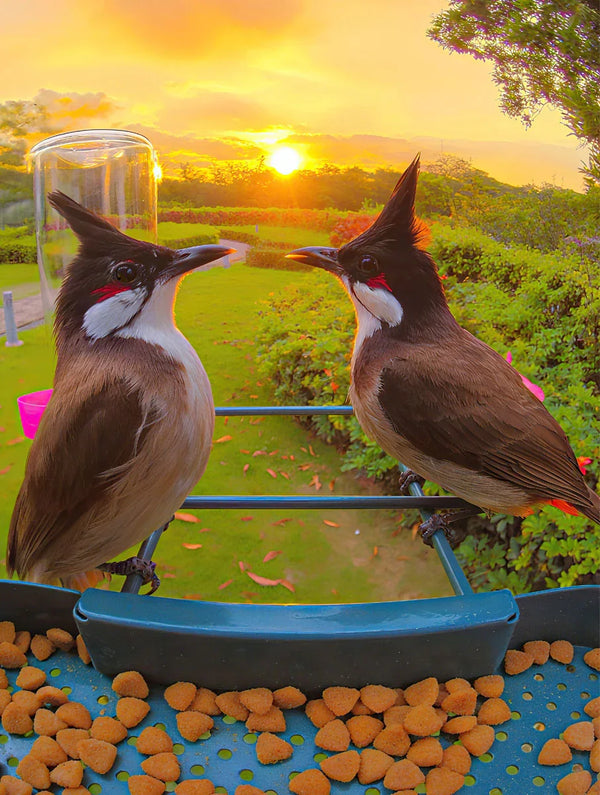Discover the Secret to Attracting Hummingbirds Right to Your Garden!
Welcome to the enchanting world of hummingbirds, where vibrant colors and swift movements bring life to any garden. These fascinating creatures are not just a delight to watch; they play a vital role in pollination, helping many of our favorite flowers thrive. The joy of attracting hummingbirds can transform your outdoor space into a lively haven filled with their delicate chatter and fluttering wings. In this guide, we will delve into the essentials of bird feeders and hummingbird nectar, uncovering the best practices to invite these tiny marvels into your garden. Expect to learn about their feeding habits, how to choose the right feeder, prepare homemade nectar, and maintain a welcoming environment for these beautiful birds. Let’s get started on this rewarding journey of hummingbird attraction!

Understanding Hummingbirds and Their Feeding Habits
Hummingbirds are remarkable beings, known for their incredible flying abilities and iridescent feathers. With over 300 species found in the Americas, these birds have specific dietary needs largely comprised of nectar from flowers, supplemented with small insects and spiders for protein. They possess a unique long, slender beak that allows them to extract nectar efficiently. Hummingbirds are particularly attracted to brightly colored flowers, especially those in shades of red and orange. To create a thriving garden that caters to these birds, it's essential to provide a consistent food source. By understanding their feeding habits and nutritional requirements, you can effectively design your garden to become a hummingbird haven, ensuring these delightful visitors return frequently.
Choosing the Right Bird Feeder for Hummingbirds
Selecting the appropriate hummingbird feeder is crucial for attracting these charming birds. There are several types of feeders available, including tube feeders, saucer feeders, and window feeders. Tube feeders are great for their ability to hold more nectar and attract multiple birds at once, while saucer feeders are easy to clean and refill. Window feeders, on the other hand, offer a close-up view of these birds in action, making them a favorite among many birdwatchers. When choosing a feeder, consider factors like size, material, and ease of cleaning. Look for feeders that have a wide mouth for easy filling and cleaning, and ensure they are made of durable materials that can withstand the elements. A well-chosen feeder will not only enhance your garden's aesthetic but also provide a reliable source of food for your feathered friends.
Preparing Hummingbird Nectar at Home
Creating homemade hummingbird nectar is simple and rewarding. The most popular recipe involves mixing four parts water with one part granulated white sugar. Boil the mixture to dissolve the sugar, then let it cool before filling your feeder. This homemade nectar is not only cost-effective but also free of dyes and additives found in many commercial products. Freshness is key; it’s best to prepare small batches and store any extra nectar in the fridge for up to a week. Regularly check your feeders and replace the nectar every few days, especially in hot weather, to prevent fermentation and mold. By providing fresh nectar, you ensure that your garden remains an inviting place for these exquisite birds.
Best Practices for Feeding Hummingbirds
To maximize your chances of attracting hummingbirds, placement of your feeders is crucial. Position feeders in a shady spot to prevent the nectar from spoiling too quickly, ideally near colorful flowers or plants that attract hummingbirds. It's also beneficial to hang feeders at eye level for easy viewing and observation. Regular maintenance is essential; clean your feeders weekly with hot, soapy water to prevent mold and other harmful growths. If you notice any signs of mold or fermentation, replace the nectar immediately. Refilling the feeders regularly is also important to maintain a steady food source, ensuring that hummingbirds view your garden as a reliable haven. With proper care and attention, your garden can become a bustling hub of hummingbird activity!
Creating a Hummingbird-Friendly Garden
Attracting hummingbirds to your garden is not only a delightful experience but also beneficial for your plants and local ecology. By understanding their feeding habits, choosing the right feeders, preparing fresh nectar, and following best feeding practices, you can create an inviting environment that will keep these beautiful birds returning season after season. So, take action today! Set up your hummingbird feeders, prepare some homemade nectar, and enjoy the vibrant presence of these enchanting visitors in your garden. The joy of watching hummingbirds flit about is a reward that every garden enthusiast should experience!








